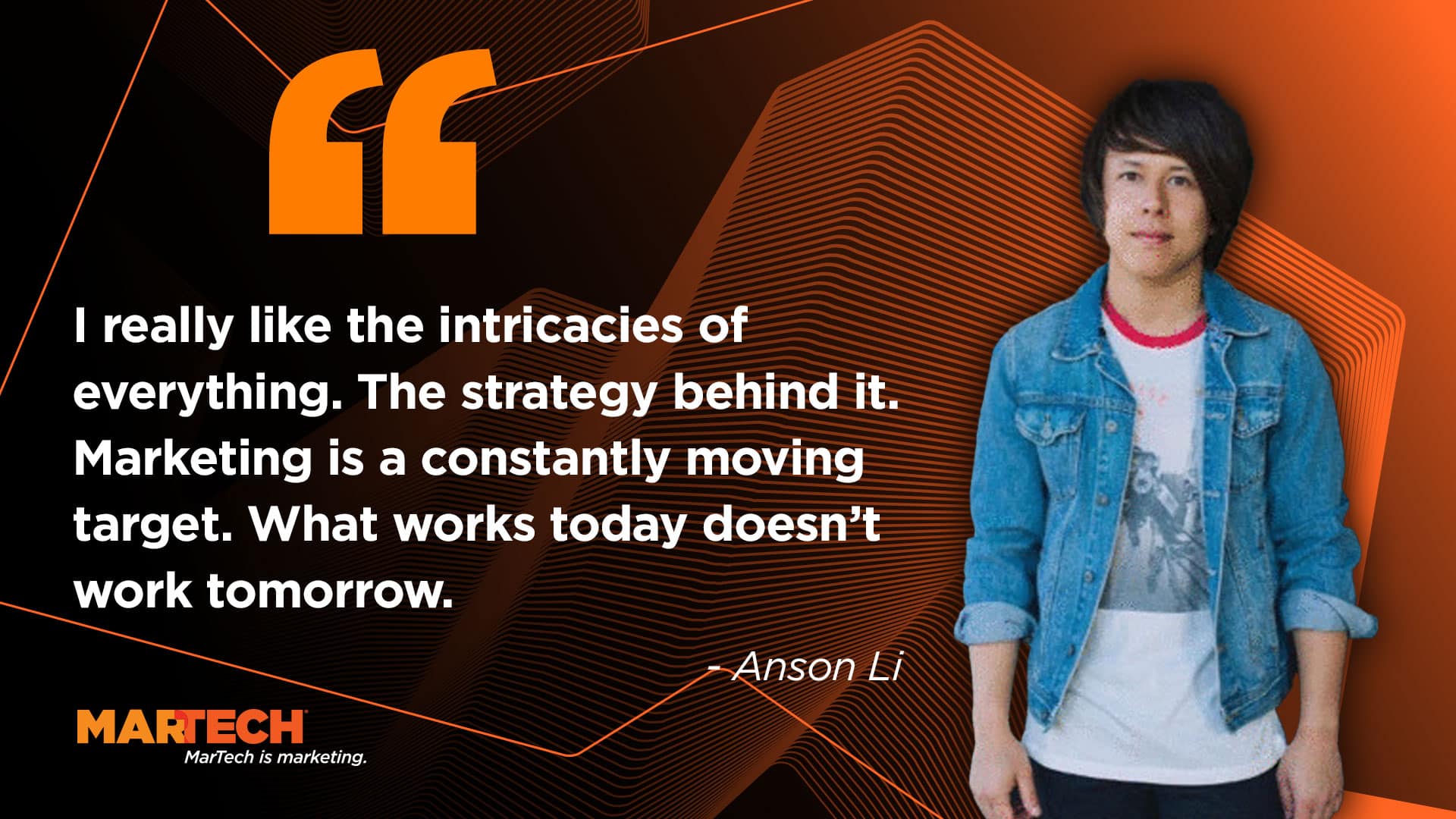
As part of our Salary and Career Survey, we interviewed people about their experiences in marketing. Today we’re talking to Anson Li. He’s the paid marketing manager at a medium-sized US company. He’s in his late 20s and has been in marketing for about nine years.
How did you get into marketing?
When I was growing up, I was very much involved in music. I really wanted to be a rock star and I thought to myself, “OK, this day and age, to have your music to be heard you really need to know how to market yourself and how to get people to listen to it.” Later I went to college for marketing and it opened many more doors of my interests. I’ve now been in a variety of different industries and verticals. Everything from B2C to B2B, from the entertainment industry to ecommerce to retail to travel. Many different industries, from an agency side and from working internally in a company. So, although I look young, I’ve seen quite a lot.
What do you like about it?
I really like the intricacies of everything. The strategy behind it. Marketing is a constantly moving target. What works today doesn’t work tomorrow, especially with everything that’s going on with legislation and data privacy these days. It gets harder and harder to do it, but I enjoy the challenge and I enjoy building the infrastructure of the marketing department. Every place I go to, I always see where the Inefficiencies are and what we could be doing better. How we can improve tracking or analytics or reporting.
It’s not just about targeting users and building LTV and user acquisition. There’s a lot more about it. There’s the story about the brand. There’s the story and the emotions you’re trying to connect with on an individual level and the communications you have with that individual person. There’s just so many different facets and I love that. For me, it’s just never boring.
What’s the hardest part?
There’s a lot of data chaos, especially in 2022. Everyone’s tracking everything. We’re basically a tech company, so we’re constantly building new events in different kinds of tracking. But then you get all this data chaos. So you have to kind of figure out how to block out the noise. We have a lot of data silos and one of my jobs was to kind of bring everything together. You know we have a mixture of different data, dashboards and different places where data is warehoused and now we’re trying to put it all in, combining in different places.
Get the daily newsletter digital marketers rely on.




